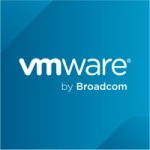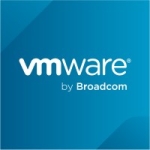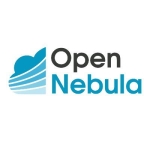What is our primary use case?
We pretty much use it only for load balancing between hosts.
We're a payroll company and Turbonomic is really important for us from about November until March, each year, because our end-of-year processing increases our load by six to seven times. That's especially true in November and December when companies are running their last payrolls. If we're going to be losing any customers, they definitely have to finalize everything all at one shot. In addition, companies that pay out bonuses at the end of the year also have to be running all these extra payrolls. There are a slew of reasons for extra payrolls at that time of year. They may need to do some cleanup if they messed up something and didn't do so all year long. At that point, they have to do it before December 31st. And after December 31st is the beginning of tax preparation, so our systems are very heavily utilized.
It does a great job year-round, but we're in a situation where we have plenty of resources during most of the year, but at year-end, depending on how busy it gets, it can overwhelm the systems if you're not careful, depending on where a VM sits, on which host.
How has it helped my organization?
We have parts of our payroll engine that run pretty hot, depending on what's happening. Those pieces of the payroll engine and the SQL servers tend to overrun a server pretty quickly, if you're not careful. But Turbonomic always does a great job of making sure that that is not happening.
Our company is growing like a monster. Even during COVID we've been growing, where a lot of companies, unfortunately, are not. Because we've gained a lot of new customers during COVID, because other payroll companies have gone under or because our pricing model is good, the result has been a lot more load on our systems. And even though we've had much more load, Turbonomic has done a great job of keeping everything balanced. We're able to completely utilize our systems before having to introduce more hardware.
Its whole job is to manage our business-critical applications by understanding the underlying supply chain of resources. In my opinion, applications are applications. When your application is running, it's reserving a piece of memory, it's utilizing the CPU, and it's utilizing the network interface. There is a certain limit to the hardware that's available to it. Applications need watching. If we were to use the pieces where it digs down inside the application, it would probably even do better, but we're not using those pieces yet. In the end, no matter what the application is doing, it's using resources, either on a regular basis or on a random basis, and Turbonomic looks for patterns and spikes and how long these patterns last. It looks at the risk of a spike only happening for 30 seconds versus 30 minutes. It makes decisions to move other things off or move off the application in question. It does a great job keeping that balance.
We hardly do any manual execution. Maintenance windows are when it's probably most important to us. For example, when we're upgrading or doing a repair on an ESX host, we're really taxing the other servers because those CPUs and all the I/O capability on that host are lost. That's when it's even more important for Turbononic to keep the rest of the system healthy enough and to keep the system going without showing any degradation. It helps us while we're doing maintenance.
It provides a proactive approach to avoiding performance degradation, absolutely. It always looks at history and looks for patterns. In a lot of cases, it knows that there's a scheduled task or that, on average, a customer is always like hopping on around three o'clock. After a week or two of seeing the exact same things happening—although that timeframe really depends on how big your organization is, the bigger your organization, the longer it takes to understand the full dynamic—it really understood all the patterns and all the schedules. In the past, we'd see systems starting to get a little hotter and then a little hotter still. With Turbonomic, that issue would just go away by shuffling stuff around. After a week or two we wouldn't see that thing getting warm anymore. When that application or server got hot, it never put that host into any kind of jeopardy anymore, not even a little bit where we thought, "Hey, we should look at that."
We have definitely seen a reduction in tickets open for application performance issues. In some cases we get tickets for performance problems because the developer wrote crappy code and wants to blame us in infrastructure. But I can show them, "Look, we're not overloaded." They look at some of the logs we provide them that show that the servers are operating at full capacity and usually they find that there's some kind of weird issue with a database query that they wrote. The solution has definitely reduced tickets for application performance problems a little bit, but it has mostly decreased troubleshooting time.
It's helped us to always meet our SLAs. In previous companies I've worked at, the company was either so cheap, or the boss didn't understand how the infrastructure works, that we got to the point where we were over utilizing our hardware. That's where Turbonomic really makes a difference because without it you can be way over-committing what you have versus what you need. You always have servers that are sitting there idle, so it's best if you can balance the ones that run hot with the ones that run idle and shuffle around use of them based on what you're utilizing. If you don't have Turbonomic, then whatever boxes happen to be on there could be in overdrive to the point where you start ballooning and paging. That can cause a denial of service because you don't have enough resources to handle the workload. It's really great to try to maximize every inch of your infrastructure, to make sure you're utilizing everything to its fullest capacity.
Whoever is on call loves Turbonomic because if we didn't have it we'd be getting alerted much more often. That's especially true at three o'clock in the morning when some backup or something that's not even important is running and the pager will go off because it hits some threshold for too long. Turbonomic sees, "Okay, this server does this at this time and it's going to use a lot more resources than anybody else," and it just shuffles everything away.
What is most valuable?
I only deal with the infrastructure side, so I really couldn't speak to more than load balancing as the most valuable feature for me. It provides specific actions that prevent resource starvation. It always keeps things in perfect balance. Most of the time it tends to be our SQL servers.
When I first started at this company, only the boss knew about Turbonomic, and he had totally forgotten to even mention to me that they had it. They weren't using any other software like that. I was always curious and I kept asking all the other guys about how the system always stays so balanced and that we never seem to have a host that runs really hot, under any circumstances. Finally, in my first review, I asked him, "What are you guys doing there in the background that you haven't told me about, that keeps the system so balanced?" And he said, "Oh yeah, we're using Turbonomic." For whatever reason, they didn't have a DNS entry for it. The guy who put it in, he always just connected to it by IP, and he totally forgot about it because it just works. You don't have to go in there and do a lot to it unless there is a problem, and we never have a problem.
Also, since we're only using it for the infrastructure part, it's not telling us anything about the application. It just tells us about the server that is running the application. But if the application is getting bogged down because you're starting to see disk I/O problems, it does a fabulous job of recommending. "Hey, let's move this here or do that there." In every case that I can ever remember, it has always done a great job.
It doesn't really require any maintenance. Just set it up and let it do its job.
What needs improvement?
On the infrastructure side, they've been doing it long enough. But until I get a better use case for the cloud, the only thing I can think of is that I'd like to see it work with SevOne, when you're doing true monitoring, so that the software packages work together.
It would be good for Turbonomic, on their side, to integrate with other companies like AppDynamics or SolarWinds or other monitoring software. I feel that the actual monitoring of applications, mixed in with their abilities, would help. That would be the case wherever Turbonomic lacks the ability to monitor an application or in cases where applications are so customized that it's not going to be able to handle them. There is monitoring that you can do with scripting that you may not be able to do with Turbonomic. So if they were able to integrate better with third-party monitoring software—and obviously they can't do them all, but there are a few major companies that everybody uses—and find a way to hook into those a little bit more, the two could work together better.
For how long have I used the solution?
We were actually a customer of theirs even before it was Turbonomic, back when it was VMTurbo. It's been at least 10 years.
What do I think about the stability of the solution?
I've never ever had it crash or go down.
Turbonomic is one of the best software solutions ever written. You just set it up and you only go in there when you're having a problem. The truth is that we don't have that many problems anymore. The only time we had a problem was shortly after I first started, because none of the guys even paid attention to it because it always did its job. We ended up having to change our vCenter server. We moved from a physical box to an appliance and when we did that, the vCenter had to have a new name. Because none of the guys, other than my boss, were around when Turbonomic was set up, they didn't log into it because it always did its job. They totally forgot about it. And for something like two weeks we were seeing some goofiness where boxes were getting hot. I messaged, "Hey, did you put that change in Turbonomic?" and he replied, "Did I put what in what?" Other than that, we just don't have to go in there. It works so well that we just don't do anything to it.
We have it set up to throw out some alerts if things get too haywire, but it didn't even get to that point. We like to be very proactive in keeping our systems very low in resources. Had we let the problem go on a little bit longer, it probably would have thrown out an alert, but the problem was that we didn't have the vCenter in there.
What do I think about the scalability of the solution?
At the first shop I worked at where we got Turbonomic, we had over 60 hosts and it did a magnificent job. In my current company we're only monitoring 15 or 20. I can't see it having a problem. The more servers you have, the more return you get on it.
In terms of increasing our usage, we're always pushing the developers to do stuff with it. The problem for us is that we're owned by a parent company and IT infrastructure works for and reports to the parent company. But the IT development software group reports to the actual company. They're under a totally different chain of command, so we can't really dictate anything that they do. All we can do is make recommendations, but their director has his own plans. We try to show them the benefits, but it's a lot of work to sit down and configure it, which is not worth it if they're not going to use it. And we have enough other projects that we have to work on, so we have to pick our battles.
How are customer service and technical support?
Their tech support is awesome. We've never had any problems with them. But to be honest with you, we haven't really had to call them in 10 years, except for one time when I called them because I couldn't find our license key. It was not about supporting the software, per se.
Which solution did I use previously and why did I switch?
We were trying to use VMware's version of it, but it's a pile of junk. It doesn't work. It just sees that something is busy and moves it somewhere where it's slower. Turbonomic is better because it trends and it looks at history. If it knows that something is only going to run hot for 30 seconds, but it's going to take 45 seconds to move everything around, then it's not worth moving. You don't get that out of VMware's product. It just saw, "Okay, so it's hot, start moving." But the problem is that when you start doing the move, you're also now utilizing even more resources, and you could save on those when the move is going to take longer than the actual task that's causing the spike. Turbonomic sees that and it doesn't necessarily move stuff just for the sake of moving it. It knows that this is something that happens every day at this time and we're just going to ride it out.
We were actually one of their first customers, when they were still ironing out all the wrinkles of their algorithm. My boss and I were both looking at it and seeing how it was shuffling stuff around non-stop. It couldn't even gather data at a point. It was already moving it somewhere else. We called in, took some notes, and they produced a new version. We did what felt like beta-testing even though it had been a production piece for a while. But they were very responsive and produced patches really quickly. The company was a really good company. They were really friendly, and they're always trying to deliver what they promise.
How was the initial setup?
If you can't set this thing up then you shouldn't be in IT. We're only using it from the infrastructure side. You log into it, you set your passwords, import your vCenter into it, put in the credentials, and tell it what vCenters you want it to monitor. And it just starts gathering data.
We did our setup many years ago and, back then, we had a guy there walking us through it because they were a brand-new company. They really gave us the white-glove treatment. I think we may have spent two hours on it, but most of that was talking. If you buckle down and just shut up and do it, it would probably take 15 or 20 minutes. It only takes one person to implement it.
We have six guys who use Turbonomic now. Some are higher-level guys and we have our entry-level guys, but everybody has access to it and looks at it if they need to.
What was our ROI?
I don't know what we would have bought if we didn't have it, so it's hard to say how much we have saved. We may have bought more hardware thinking we needed more hardware when we didn't. We just needed to shuffle stuff around. So it's hard to say what we would have done if we didn't have it, and if we didn't have that reporting telling us, "Hey, this is where the problem is".
What's my experience with pricing, setup cost, and licensing?
If you're a super-small business, it may be a little bit pricey for you. The problem with small businesses is that the owners are super-cheap and they don't want to spend anything unless they absolutely have to. It's really hard to explain this solution to people with that mentality. But you can run more servers on less physical hardware because it will keep things balanced based on your usage patterns.
But in large, enterprise companies where money is, maybe, less of an issue, Turbonomic is not that expensive. I can't imagine why any big company would not buy it, for what it does.
If you didn't have it and you went out and bought a whole new server, you're talking about spending something like $7,000 with Microsoft for a decent license, and then you're talking about a VMware license as well, which I would venture is in the $5,000 to $7000 range. And memory is so expensive all the time. And another server is going to cost, say, $10,000 to $15,000. If you do that twice over a couple of years, Turbonomic will have paid for itself. And that's not to mention the fact that it's also made things so much better for you because it has kept the system stable. I don't think Turbonomic is expensive, in that sense.
I put in a lot of expense and time in the very beginning, because I was trying to learn it. But if you're smart, you'll look back and see how well it's managing your systems now and you'll feel like a fool that you went out and bought all that new hardware in the past, because you probably could have gotten away without it. If you're truly maximizing your systems, the way that Turbonomic does, you can get away with less hardware with the same infrastructure because it's maximizing the hardware better. And that keeps your licensing costs down.
Which other solutions did I evaluate?
We did a lot of research, especially at that time, and there aren't really a whole lot of other software solutions out there, at least nothing that's comparable to Turbonomic. There are other companies that do something similar, but they don't have anywhere near the level of complexity or the type of algorithms that Turbonomic is using to keep the system stable.
I don't remember what we evaluated at the time, other than VMware, because everybody works with Vmware, but the other solutions we had looked at were not even in the realm of Turbonomic, so we didn't evaluate them for more than a day.
What other advice do I have?
If you're looking into Turbonomic, just do it. You will not regret it.
The biggest thing that I've learned is that you don't realize how much your hardware can do until it's truly balanced. Some people operate foolishly and they just won't step up because they're being cheap. Other people want to be ultra-conservative because they don't ever want to have a problem, but using software like this, you realize that there is a balance. If you trust the software, you get to utilize your hardware better while still feeling like you have those reserves available without putting yourself at risk by being foolish.
It provides a single platform that can manage the full application stacks, but we're not using that aspect. Our developers are not interested in using it yet. We're in the process of looking for a new monitoring software as well, and I'm pushing heavily for them to look at SevOne but we've had some unfortunate experiences with the people at SevOne. If we go down that route and start using SevOne, my boss is going to lean on them much more heavily to start integrating with Turbonomic.
It only handles virtualization right now, for us. It's probably going to start handling cloud soon, because we're just starting to migrate things there. We have some things in the cloud, but we're looking at moving quite a few other servers up to Azure. The solution understands the resource relationships perfectly, on-prem. From what I have seen so far of the cloud piece, it seems to understand that, mostly, although the cloud is still fairly new compared to on-prem infrastructure. I have no doubt that they're going to make huge strides and make that part even better. I don't know that it's as good in the cloud as it is on-prem. We have used it a little bit in some testing, but we haven't run it in production for any long periods of time. But we're really hoping it reduces our cloud cost at some point, because those cloud vendors really take advantage of every ounce of I/O that you use.
Honestly, on a scale of one to 10, I would give Turbonomic a 12. It's way better than a lot of software. Other solutions look really shiny—and if you're like a fish and all you care about is like looking at something shiny, that's one thing—but when those products are delivered, they don't do half of what they say they're going to do. They'll say, "Oh, that's in the next release," or "Oh, we're working on that". Turbonomic was very upfront about what their software did. Yes, they had a few bugs, but they were also just opening at the time. We expected that in the beginning because it was a brand-new company. But what they told you it would do, it did, and it did it well, too. Nowadays, that's hard to find.
Which deployment model are you using for this solution?
On-premises
Disclosure: PeerSpot contacted the reviewer to collect the review and to validate authenticity. The reviewer was referred by the vendor, but the review is not subject to editing or approval by the vendor.



















